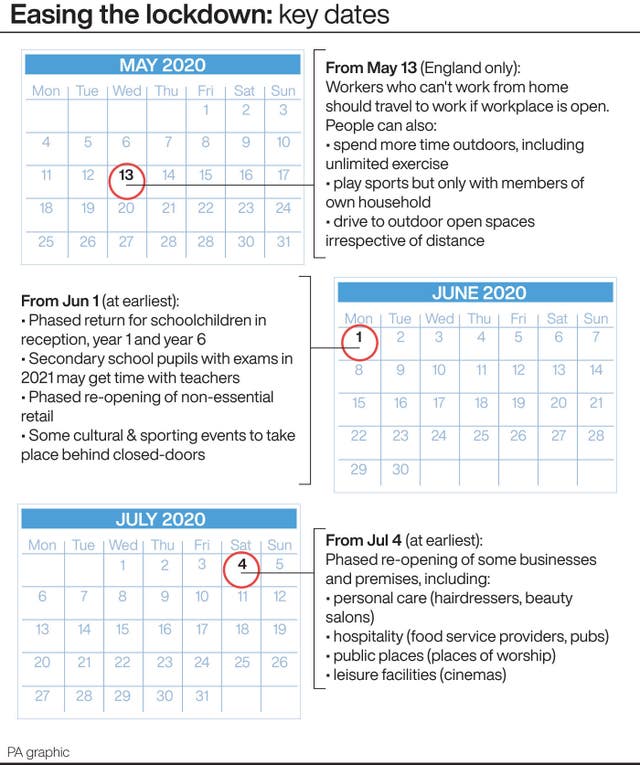
Measures for making workplaces including offices, construction sites and factories “Covid-19 secure” have been outlined by the Government.
The detailed guidance covers eight different settings and is broken down into practical steps the Department for Business, Energy and Industrial Strategy (BEIS) said should be put in place “as soon as is practical”.
Guidelines are issued for workplaces that fall under construction and other outdoor work, factories, plants and warehouses, homes, labs and research facilities, offices and contact centres, restaurants, shops and vehicles.
The guidelines apply to businesses that are allowed to open under current lockdown rules and shops that could begin a “phased reopening” from June 1 if transmission of the virus decreases.
5 steps to #workingsafely:
📋 do a COVID-19 risk assessment🧽 follow cleaning and hygiene rules🏠 help people work from home↔️ stay 2m apart where possible✅ if 2m not possible, take steps to manage risk
Read our new guidance: https://t.co/PoanbaCHL6#StayAlert pic.twitter.com/yl7IEN948z
— Dept for BEIS (@beisgovuk) May 11, 2020
Here are the key points BEIS said these steps should be based on:
– Those who can should work from home
Employers should take “all reasonable steps” to allow staff to work from home. Where that is not possible and workplaces have not been told to close, the Government said people should go to work.
– Assess risks in consultation with workers or trade unions
Under health and safety, employment and equalities legislation, employers should carry out Covid-19 risk assessments and consult staff or trade unions. Firms should publish the assessment if possible and BEIS said all businesses with more than 50 employees are expected to do so.

– Where possible, two-metre social distancing should be maintained
Work areas should be redesigned to accommodate a distance of two metres between people, while other measures could include staggering start times, creating one-way pathways around sites, opening more entrances and exits, or changing seating plans in break rooms.
– Manage the risk of transmission if two-metre distancing not possible
This could include putting barriers in shared spaces, creating shift patterns or fixed teams to minimise contact between people, or ensuring colleagues are facing away from each other.
If a risk assessment shows personal protective equipment is required then it must be provided free of charge to workers who need it and must fit properly.
But the Government guidelines say workplaces “should not encourage the precautionary use of extra PPE to protect against Covid-19 outside clinical settings” such as hospitals or when responding to a suspected or confirmed case of the virus.
Employers are encouraged to support their workers in using face coverings safely if they choose to wear one.
– More frequent cleaning
Workplaces should be cleaned more frequently, with a focus on objects that are regularly touched by different people such as door handles and keyboards. Employers are told to provide hand-washing facilities or hand sanitisers at entry and exit points and a notice to display is available to download on the Government website.

Enjoy the convenience of having The Sunday Post delivered as a digital ePaper straight to your smartphone, tablet or computer.
Subscribe for only £5.49 a month and enjoy all the benefits of the printed paper as a digital replica.
Subscribe